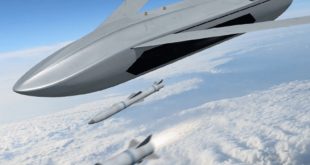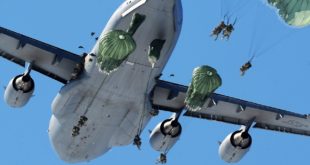In the dynamic landscape of modern warfare, staying ahead of the curve is critical for military forces around the world. To ensure a decisive edge on the battlefield, the United States Army is continuously exploring innovative technologies and tactics through a series of cutting-edge experiments. One such groundbreaking initiative is …
Read More »How DARPA’s LongShot Program is Revolutionizing Air Combat with Air-Launched Air-to-Air Missile Carrying Drones
In the realm of modern aerial warfare, technological advancements are continually pushing the boundaries of what is possible. One such groundbreaking initiative is the Defense Advanced Research Projects Agency’s (DARPA) LongShot program, which is paving the way for a new era in air combat with its innovative approach to air-to-air …
Read More »Wireless Power Unleashed: DARPA’s Whisper Beam for UAV Swarm Operations
Introduction In recent years, Unmanned Aerial Vehicles (UAVs), commonly known as drones, have rapidly evolved from niche technology to indispensable tools for various industries and military applications. However, one of the most significant challenges for UAVs has always been their limited flight time due to onboard battery constraints. To overcome …
Read More »Laser Beam Combining: Advancing Laser Directed Energy Weapons with Wavelength and Spectral Precision
Introduction In the realm of modern warfare, laser directed energy weapons (LDEWs) are emerging as game-changing technologies. These weapons harness the power of lasers to deliver precision strikes and deliver high-energy beams to incapacitate or destroy targets. One critical aspect driving the effectiveness of LDEWs is laser beam combining. By …
Read More »Collaborative Robots: Enhancing Safety and Efficiency in Manufacturing
Automation has become essential in many fields of industries. It allows processes to function with increased efficiency and productivity. Industrial automation is a field that deals with the automation of industrial processes and machinery to reinforce manufacturing, material handling, and quality control processes. Demand for automation is driven by …
Read More »Brain-to-Brain Communication on the Frontlines: The Emergence of Brain-to-Brain Interfaces for Soldiers
The brain-computer interface (BCI) allows people to use their thoughts to control not only themselves, but the world around them. Every action our body performs begins with a thought, and with every thought comes an electrical signal. The electrical signals can be received by the Brain-Computer Interface (BCI), consisting of …
Read More »Transforming Military Parachutes: The Role of AI and Stealth in Safety and Effectiveness
A parachute is a device used to slow the motion of an object through an atmosphere by creating drag (or in the case of ram-air parachutes, aerodynamic lift). Parachutes are usually made out of light, strong fabric, originally silk, now most commonly nylon. They are typically dome-shaped, but vary, with …
Read More »Revolutionizing Military Tasks: How DARPA’s Perceptually-Enabled Task Guidance (PTG) Program is Developing AI Assistants to Partner with Military Personnel in Complex Environments
Introduction: In today’s military landscape, personnel face the challenge of performing increasingly complex tasks while interacting with sophisticated machines and platforms. To address this, DARPA launched the Perceptually-enabled Task Guidance (PTG) program in 2021, aimed at developing advanced AI technologies to provide real-time guidance and support to military personnel. By …
Read More »The Future of HR: Embracing Technology and Innovation for Successful Talent Management
Every organization, large or small, uses a variety of capital to make the business work. Capital includes cash, valuables, or goods used to generate income for a business. For example, a retail store uses registers and inventory, while a consulting firm may have proprietary software or buildings. No matter the industry, all …
Read More »Human Augmentation technologies making us “superhumans,” or Human 2.0
Augmented Human refers to a concept that involves enhancing or extending human abilities using advanced technologies such as artificial intelligence, biotechnology, robotics, and other emerging technologies. The term “augmented” implies that the human being is being improved or enhanced in some way, often beyond what is considered normal or natural. …
Read More » International Defense Security & Technology Your trusted Source for News, Research and Analysis
International Defense Security & Technology Your trusted Source for News, Research and Analysis



